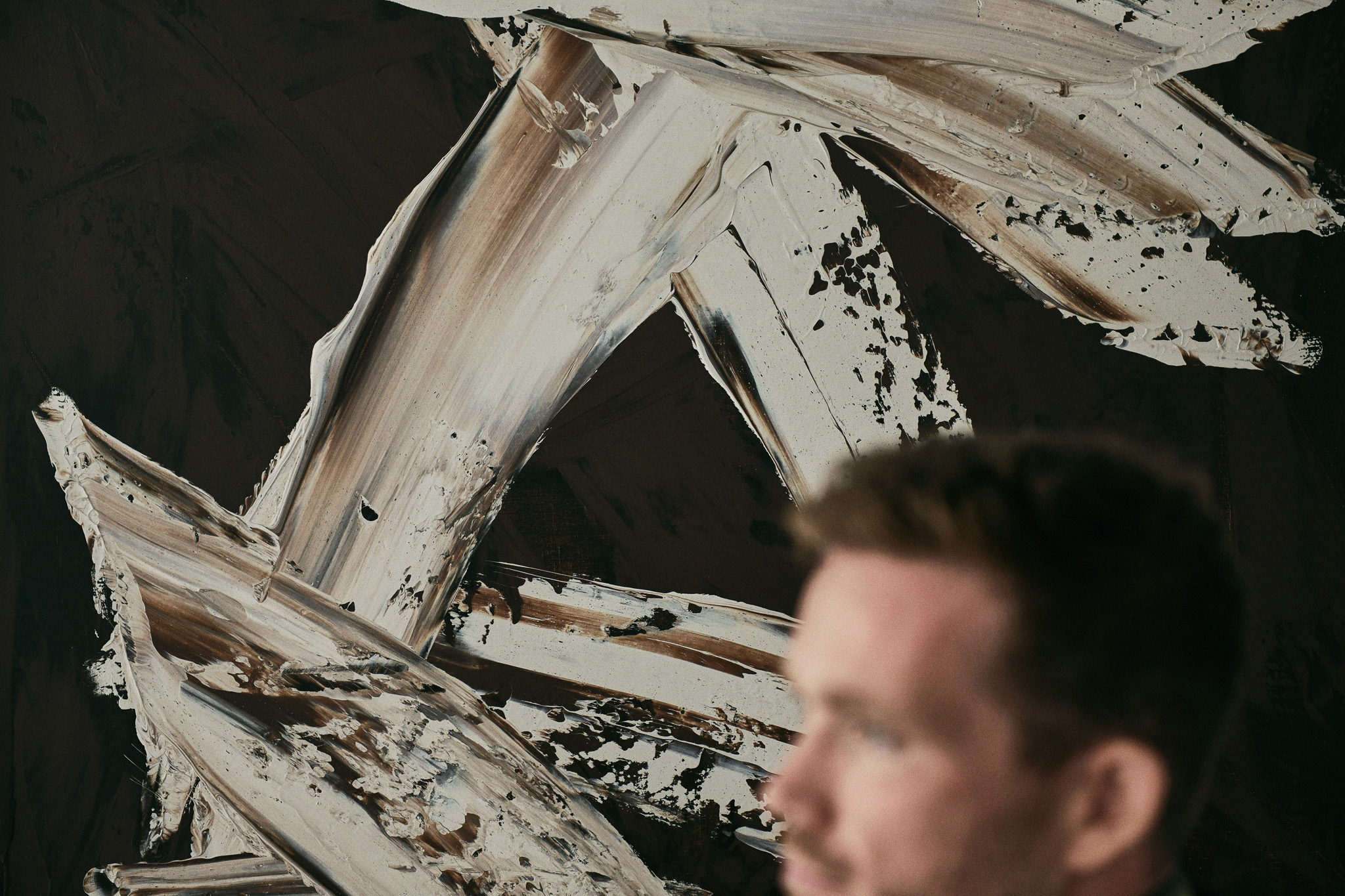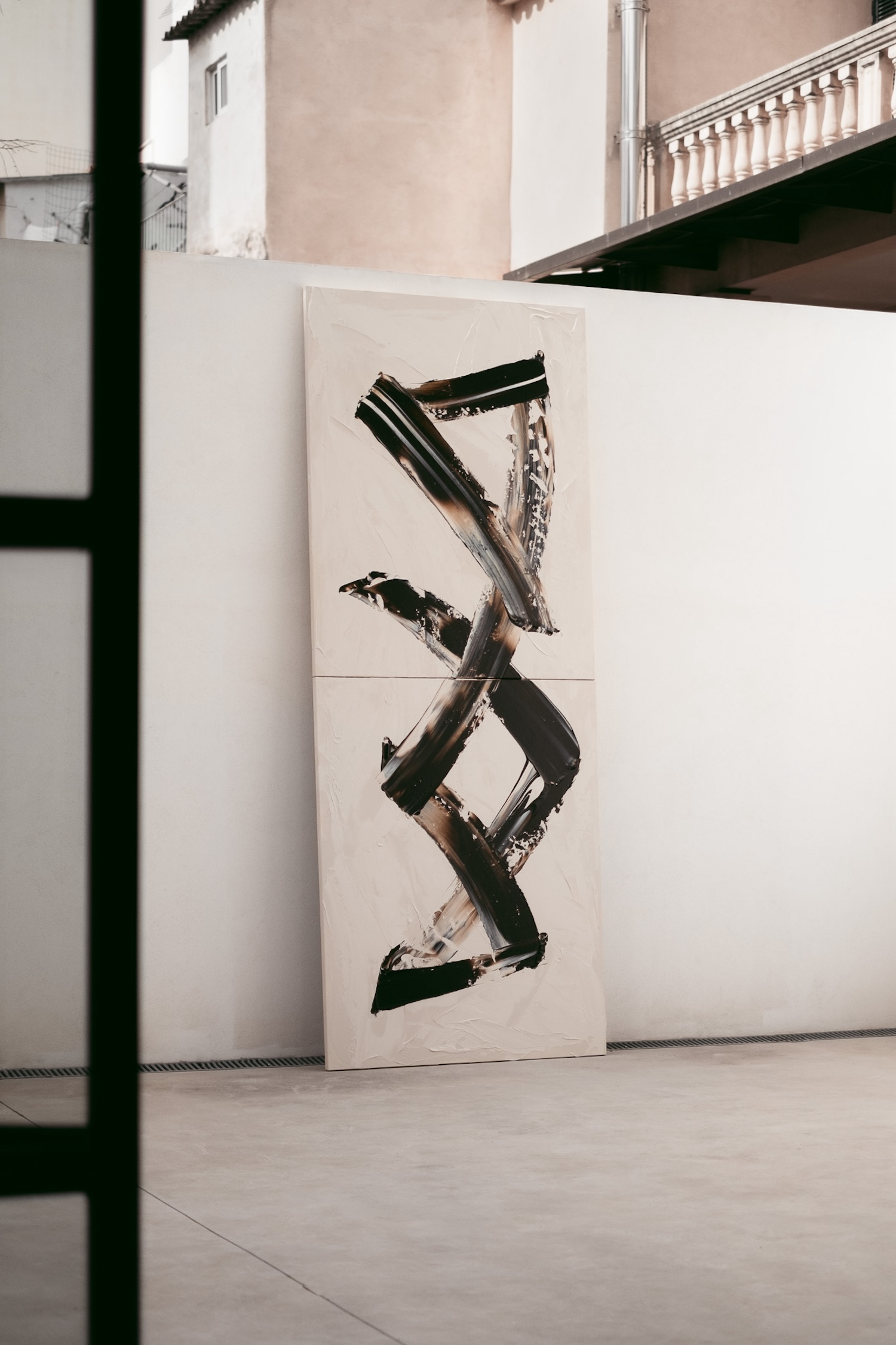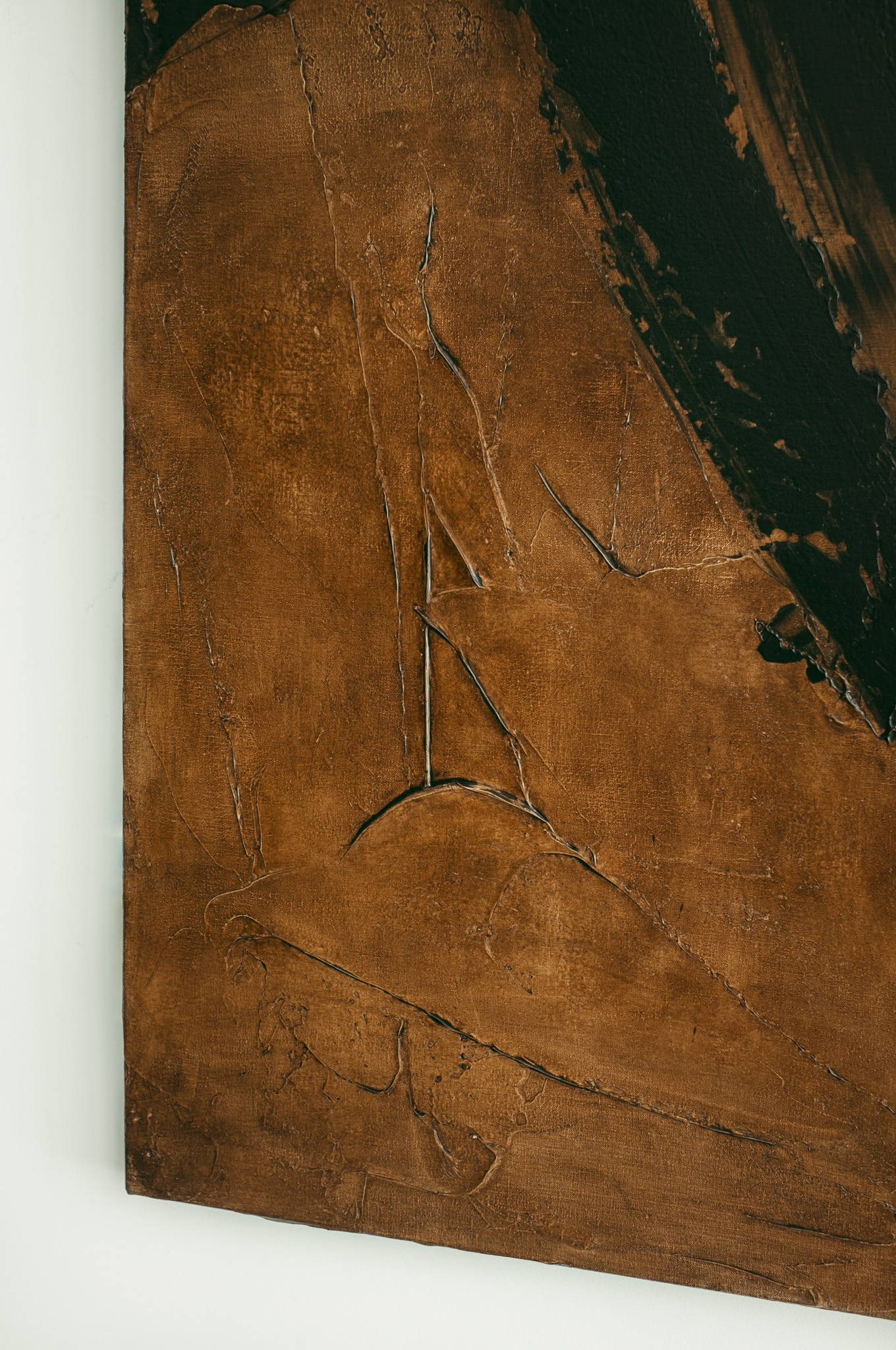
PATRICK VAN RIEMSDIJK
A Zen way of living and creating
Loneliness is often confused with being alone. Nowadays, we are used to constant agitation, continuously being exposed to stimulus. Consequently, we find ourselves avoiding being by ourselves, scared of feeling lonely or being conceived as lonely. The idea of loneliness has a negative connotation to it: it is attached to concepts such as unchosen, frowned upon and feared. However, being alone is completely different. Being alone is voluntary; it’s needed, and for many, it is therapeutic.


For many others, it’s also the time when they find their inspiration, and they rejoice in it. And Patrick Van Riemsdijk is one of those many others. As an artist, the process of creating art is continuous and, at the same time, very individualistic. “I never feel lonely, although I am alone a lot – what I like”, he mentions. In fact, he adds, “I find it fascinating to be alone in my studio, creating artwork; having the freedom to express myself this way feels like pure creative freedom”. For him, it is a form of meditation: “I become completely absorbed in my work; sometimes I even forget to eat and drink, and then I know I’ve been in a wonderful flow”.

When being alone, Patrick can explore the power of letting go: “If I use new materials, and they react differently than expected, it can result in something beautiful”. Just like in life, an artist has to learn to let things flow, even if mistakes are difficult to correct once they’re on a canvas. “This whole process can sometimes feel lonely because you have to resolve and come to terms with it yourself, but I enjoy every moment of it, no matter how frustrating it can be”, he states.
Even as a child, he recalls feeling the joy of being alone: “I could spend hours in our old shed, making objects out of wood”, he says, “I could be in my own world and create something from there”. Even though his urge to create has been there since his childhood, it wasn’t until later on that Patrick realized that he wanted to pursue his passion for creation as a profession.



Through a minimalistic use of colors and lines, he describes his art as meditative and calming. Inspired by nature and natural forms, his paintings have a unique personality that is portrayed with thick layers of paint, which add a tangible texture to the canvas and precisely encompass nature. Simple paintings that have a message within: “Some people recognize my message, some do not, but it always makes people think”. And that is the beauty of art, it is personal: “It can evoke different feelings in everyone; there is no right or wrong”.


Patrick’s art conveys peace and tranquility, reminiscent of Zen art. A style that he discovered backpacking through Japan with a friend and that became his main inspiration, from which he developed his own style. “I was deeply inspired by the culture, the people, but also the colors and forms of the country, as well as the simplicity and harmony in many things”, he explains. Zen paintings are simple in composition, emphasizing balance, beauty and simplicity, “they try to capture the essence of a subject with as few lines and colors as possible”, and that is what Patrick accomplishes with his art.

Born in Utrecht, after living in Amsterdam for 15 years, the artist and his wife were in need of change: Mallorca was the destination. “When I lived in Amsterdam and had my studio in the busy center, I didn’t realize that my art would change if I started painting in Mallorca, but it did”. The freedom of living in the middle of nowhere, away from tourism and surrounded by mountains, animals and greenery had a direct impact on his art: “I feel much freer as a person and to try new things”. “Nature is now my source of inspiration—the colors, shapes, and energy I feel here, I want to transfer to the canvas”, he adds.


Like living in an actual large Zen artwork, in Mallorca Patrick has learned that life doesn’t always need a strict plan: “We accept things as they are and come, making the best of each situation instead of what I think it should be”. A philosophy that he applies to his way of viewing art, embracing what happens on the canvas. “The peace, nature, purity of people, space, no one is rushed, people live here to enjoy life, not to work”, the painter describes, “It’s something magical”.
As much as he enjoys the process of elaborating an artwork, there is a moment when the piece is completed. That moment, however, isn’t determined by an amount of time but by a feeling: “When I apply the last stroke or layer and feel a euphoric sensation throughout my body, a kind of release of my emotions”. It’s a sensation that makes Patrick reluctant to say goodbye to the artwork, and it is a feeling that can take a long time to arrive: “It might stand in a corner for a few weeks”, he declares, “I turn it around, look at it again, and suddenly, I have an inspiration, and the work can be completed”.
Finding joy in the unknown, Patrick loves and is inspired by nature, and the peace that it brings him. With his art, he conveys that peace to the viewers, with every stroke being guided by purity and freedom.




